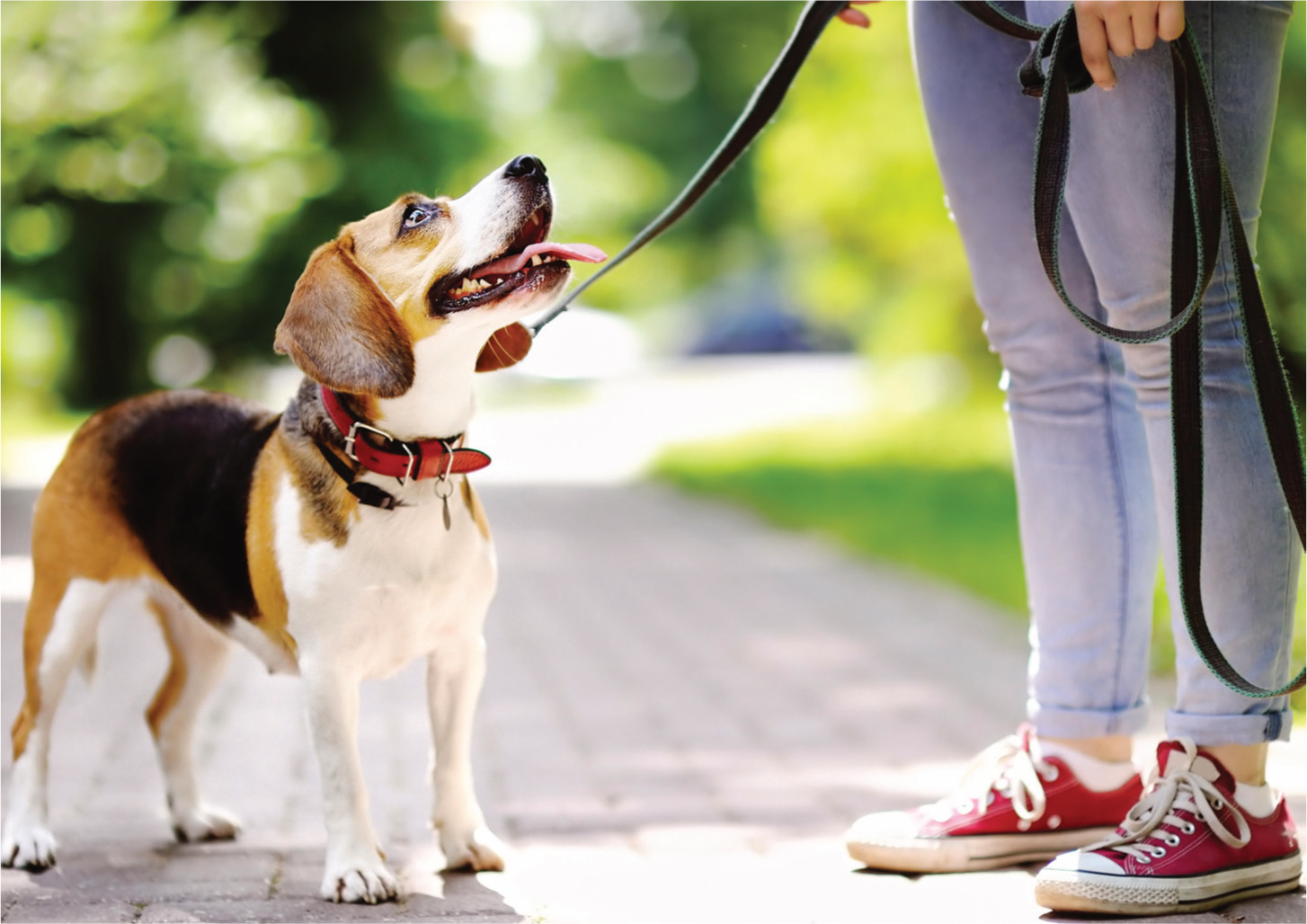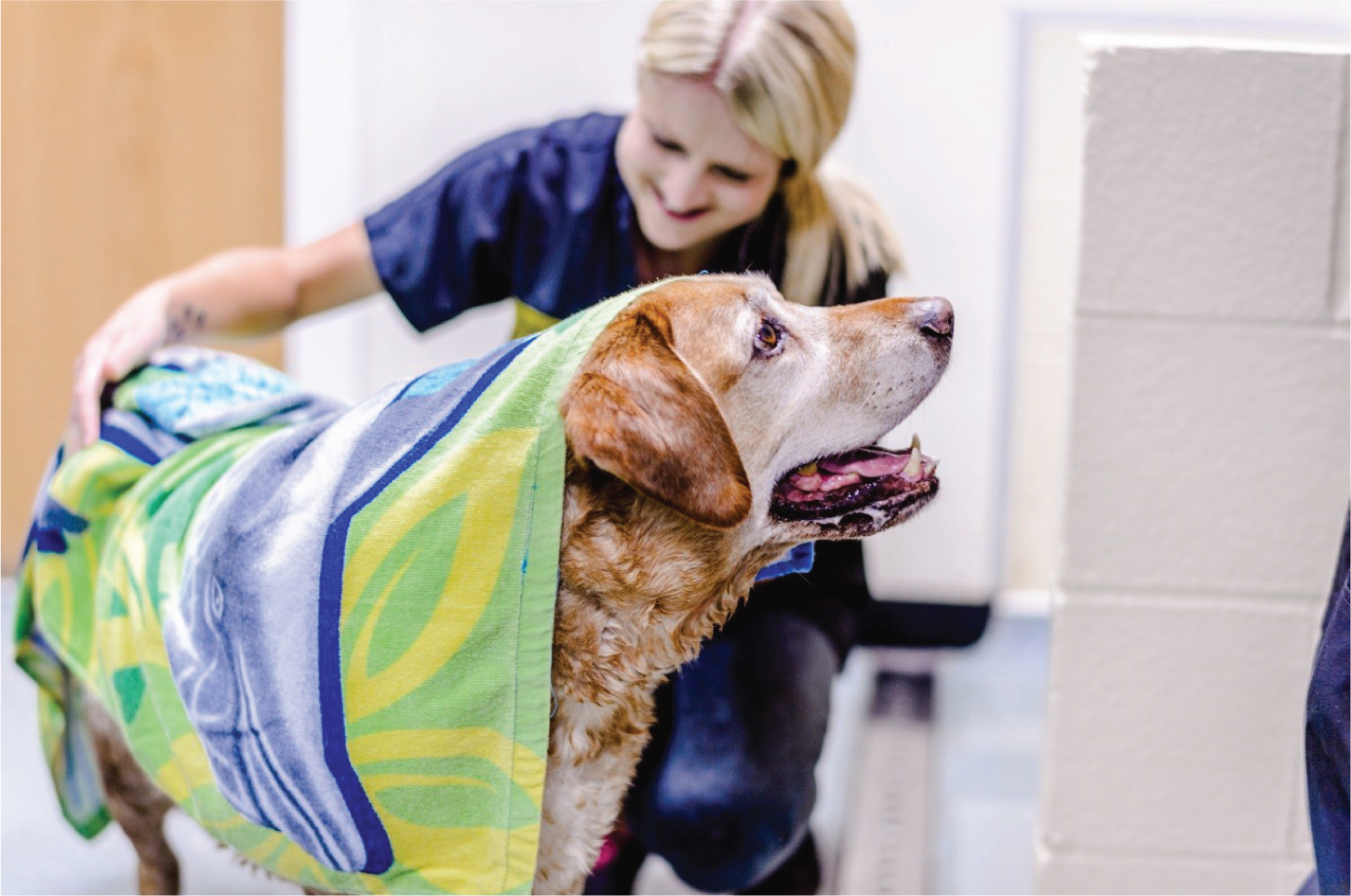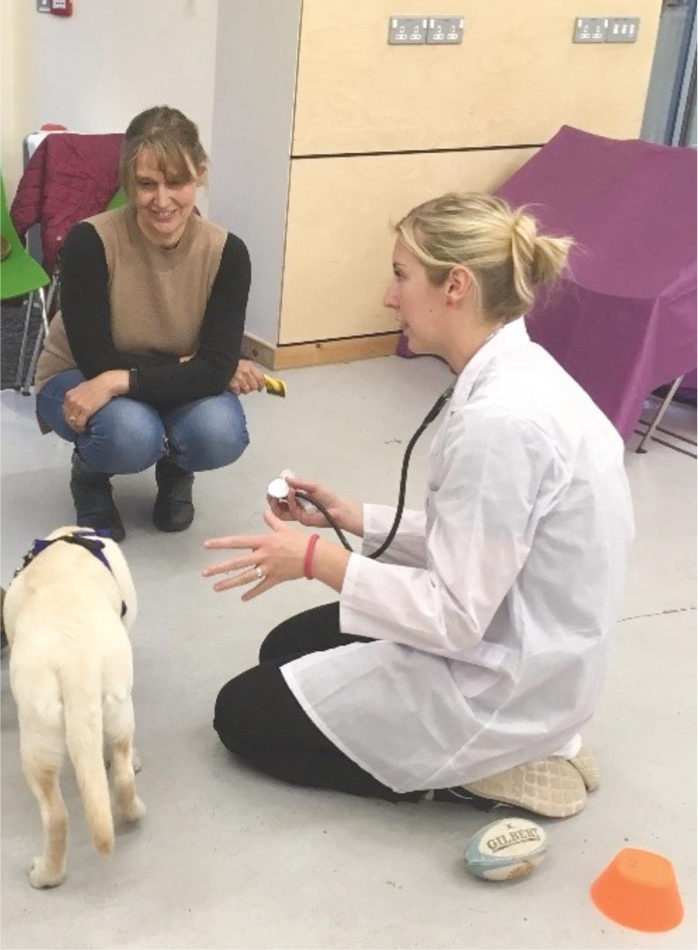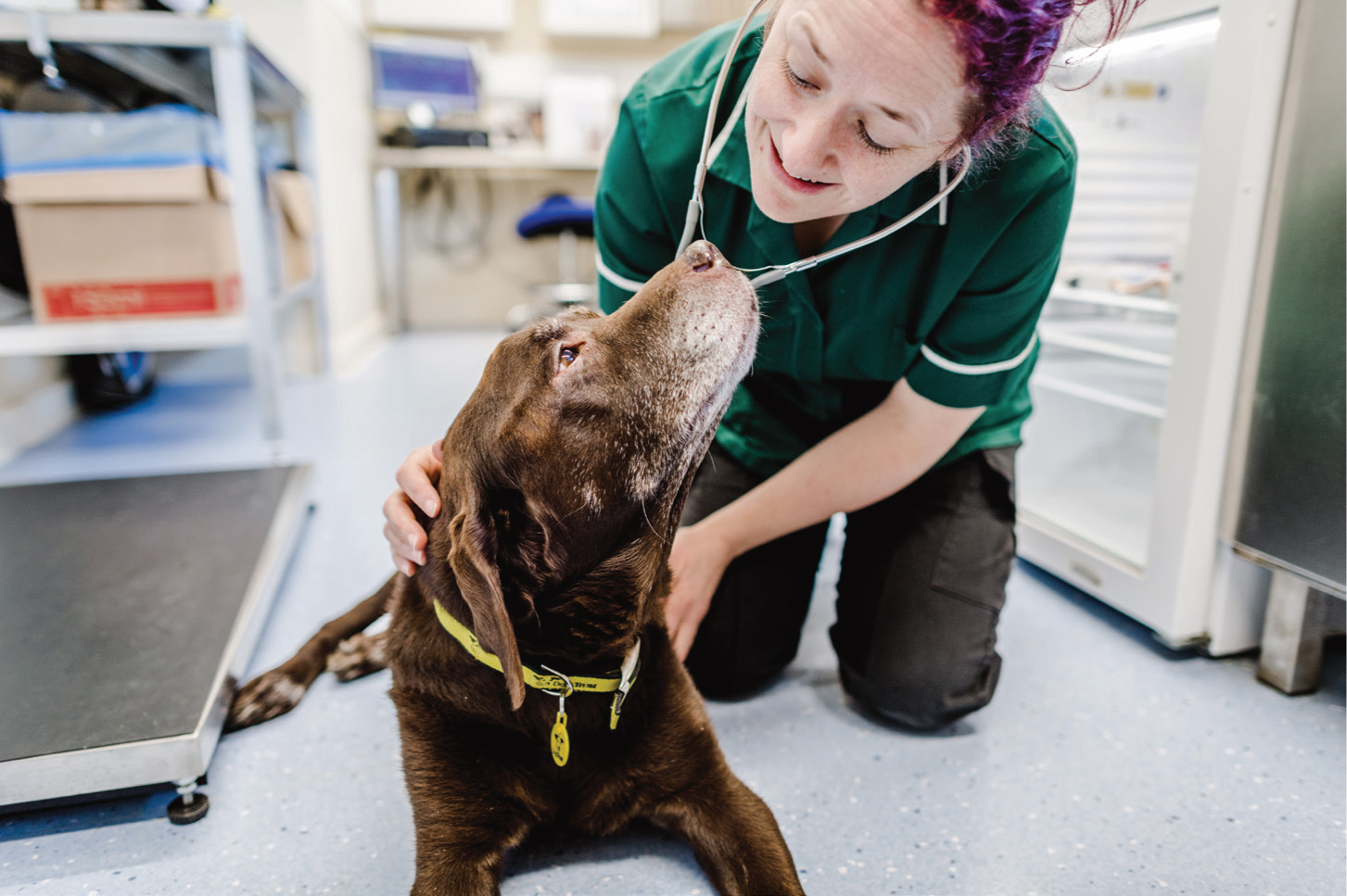The veterinary world has witnessed incredible advancement over the past couple of decades. Many medical products and surgical techniques are now considered obsolete, having been superceded by rigorously tested, safer and more effective products. Similarly, there have been advancements in theories of canine behaviour, and once popular theories bettered by scientific advancement, resulting in improvements in the understanding of what it is to be a dog.
Late 20th century thinking was based predominately in dominance theory, resulting from a 1940s study of captive wolves (Schenkel, 1947). This single isolated study influenced approaches to canine behaviour for decades. Eventually, consecutive research proved dominance theory to be flawed, and its comparisons with dog behaviour unreliable (Bradshaw et al, 2009; Mech, 1999). Understanding has developed with growing appreciation of the need to care for the behavioural and emotional needs of animals presented to the veterinary clinic (Feilberg et al, 2021).
In 2012, the International Society of Feline Medicine launched the worldwide Cat Friendly Clinic Scheme, aiming to reduce in-clinic stress for cats. But what about dogs? In one recent survey 38% of owners believed their dog ‘hated’ going to the veterinary practice (Edwards et al, 2019), risking reduced attendance. The emotional journey of canine patients through the clinic is therefore a vital consideration for optimal clientcare. Promoting veterinary clinics as actively ‘dog-friendly’ demonstrates prioritisation of patients' feelings, and that staff have a modern understanding of canine behaviour and communication.
In general, most dogs are less anxious and better able to cope with whatever life entails if they have (Dube et al, 2012; Hedges, 2020):
- Predictability
- Choice — although too much can sometimes be overwhelming
- Control
- Available, achievable positive reinforcement.
However, a visit to the veterinary clinic has the potential to impact all of these. This article aims to promote what changes can be made to clinical environments, and how staff can adapt necessary interactions, to optimise canine welfare and increase all-round safety.
Journey to the veterinary clinic
The journey to the veterinary clinic could involve stressful or exciting activity, elevating dogs', and owners', cortisol levels. Negative associations with previous visits experienced as unpleasant might also trigger a physiological stress response. Therefore a dog may enter the clinic in an anxious state, anticipating discomfort (Lind et al, 2017; Riemer et al, 2021).
To try and reduce journey-related distress, where possible, clinics could offer:
- Appointments for puppies/dogs to attend purely for ‘good experiences’
- Home visits for phobic dogs
- Pre-visit travel advice to new clients, both verbally and as a handout, to include such things as alternatives to travel by car should dogs find car journeys stressful, ensuring dogs are walked before apppointments, and owners remaining a calm influence on their dogs (Figure 1).

Reception and waiting room
Reception and waiting room areas likely present emotional and sensory arousal, affecting behaviour, for example, sounds of doors, telephones and chatter, plus the presence of unfamiliar animals such as cats and small furries which may stimulate excitement (Mariti et al, 2015; Lind et al, 2017).
Waiting times are commonly unavoidably unpredictable, therefore an owner might also inadvertently place pressure on their dog to lie down or remain quiet, burdening them psychologically. A dog's behaviour might also be negatively influenced by their ability to sense their owner's anxiety, through subtle changes in owner demeanour (Lind et al, 2017).
A dog might also experience unsolicited interaction while waiting from other owners, animals or the clinical team, perhaps being directly approached, stared at and/or touched. Though well-intended, such actions could be perceived by the dog as intimidating or threatening, and invading their personal space.
Outside waiting areas, in which clients may create distance between their dog and other patients, are helpful where available (Figure 2) (Lind et al, 2017). Dogs that are comfortable in the car may prefer to wait there with their owner, if climatically safe to do so. The reception team will therefore benefit from a system allowing clients to be alerted when their clinician becomes available. A similar system may already have been implemented by the clinic during COVID-19 restrictions and could be considered for continuation.

Within waiting areas, visual screening to prevent inter-patient/owner interaction can be achieved in a variety of ways:
- Repositioning of chairs back-to-back and not immediately adjacent, to provide between-patient space
- Free-standing notice boards or covered-tables used as between-patient barriers
- The reception desk itself as a blocking aid
- Appropriate signage, where applicable, demarcating species-specific areas. This enables the reception team to direct owners accordingly.
The reception team should feel confident to politely ask owners to create more distance between their dog and another animal or person if they feel this helpful or necessary.
Additional waiting room considerations
Additional considerations could include:
- Providing extra rubber matting for dogs with mobility issues or concerns about different types of flooring
- Raised water bowls for dogs with mobility and/or painful problems, avoiding a dog having to place their weight forwards and bend their spine, as well as taller dogs having to splay their forelegs
- Providing a variety of treats for owners to reinforce desired behaviour, such as settling down calmly, as well as creating a positive association with the clinic. The reception team should always check with the owner that treats are appropriate. It is worth noting that dogs that are nervous in the waiting room may not take a treat from a member of the veterinary clinic team, as this might be too overwhelming, but they might accept it from the owner, or when it is placed on the floor
- Towels for drying wet dogs on wet days, as long as dogs are used to being towel-dried and do not find this unpleasant (Figure 3)
- Reducing noise within the clinic reception and waiting areas can be beneficial for both the patients and their owners. Simple ways to achieve this may include reducing the ring volume of reception phones, encouraging dogs to settle, or clinic staff wearing soft soled shoes.

A reception team underpinned with knowledge of basic canine behaviour should be able to help owners identify signs of escalating discomfort, stress, anxiety, and fear in their dogs (Hedges, 2020). Steps that can be taken to reduce this include:
- Being confident to guide owners into helping their dogs relax (Figure 4), for example by asking them to take their dog for a short walk should the dog have arrived at the clinic highly aroused
- Reassuring owners of dogs who have toileted within the clinic not to worry. This is understandably normal behaviour within this environment, happening as a result of the physiological stress response of the sympathetic nervous system. Cleaning up right away, in accordance with standard clinic cleaning and disinfecting protocols, can also help to reduce the presence of strong, lingering odours. However, the odour of strong smelling cleaning products can be aversive to an already distressed dog and therefore low odour products should be used.

Consultation room
Allowing a dog the opportunity to investigate the consultation room before examination, and avoiding approaching and handling them in a way which might be perceived as threatening, will help dogs feel safe (Figure 5). If examination is necessary, careful consideration should also be given as to whether it is less stressful for a dog to remain on the floor (Figure 6) (Hedges, 2020). Generally, unless unsafe for the patient or clinician, or the patient is comfortable with being lifted and restrained on a non-slip table, it is better to carry out clinical examinations on a non-slip floor surface.


Further simple additions to help to make a dog feel more comfortable:
- Additional padding available for the table during longer procedures (e.g.: electrocardiogram or ultrasound)
- Prompt cleaning of the area (if used) between species to decrease previous patient odours
- Positioning furniture to allow for more floor space
- Providing chairs for the owner/s and veterinary professional to be able to sit to discuss the dog during longer consultations, with a blanket/dog bed.
Most consultations will involve physical interaction. A behaviourally considerate approach, and undertaking only those proceedures necessary for the consultation, should help dogs feel safe and minimise distress and discomfort, while also ensuring both the safety of the owner and staff members. It can be helpful to ask owners about any areas of their dog's body where they do or do not like to be touched. When carrying out an examination:
- Approach the patient from the side, and avoid leaning over them
- Avoid direct eye-contact (unless necessary for eye examination)
- Consider using treats throughout the examination (unless contraindicated) to help build a positive association with the handling experience. Owners can be asked to give their dog treats during the consultation, or treats may be scattered on the floor to avoid the additional pressure of the dog having to approach anyone. Prolonged-food-delivery systems may also be used, such as a licky-mat with meat paste
- When examining an area of interest, also observe the whole body, including tail position. If the dog shows signs of not coping, stop immediately. Feed the dog at this point if possible. Try again only once the dog has relaxed
- Avoid lifting a dog's feet, unless necessary. Having limbs lifted or restrained reduces a dog's choice about how to respond to a situation
- If a limb/paw must be examined, initially position your hand at the proximal aspect of the limb next to the body then slide downwards, allowing prediction you are moving towards the paw. Where possible, holding the limb in natural flexion is likely to feel more comfortable
- Depending on the reason for the appointment, it may be possible to conduct a consultation without handling the patient, particularly where the dog has a well-established, trusting relationship with their owner. The owner may be able to manipulate them and present any point of interest
- Weighing some dogs before the examination could risk arousing them to the point where examination becomes impossible. It may therefore help to weigh dogs following diagnostic interaction.
Hospital
Hospitalisation requires a dog to be confined within an unfamiliar kennel without the support and security of their owner and home surroundings. Dogs are unable to avoid necessary interactions with unfamiliar people, or to understand these are well-intended and will be, hopefully, short-lived. Each patient should be kennelled in a way that best suits their individual requirements and reduces any potential stressors (Chappell, 2009).
‘Dog friendly’ wards
Considerations for a dog-friendly ward system include:
- Individual kennels that allow dogs to stand up, turn around and lay stretched in lateral recumbency without contacting ceilings or walls
- Species-specific kenelling, designed such that eye contact is avoided between patients. Where this is not possible, screening aids can be used to prevent visual access
- Patient-centric decisions as to whether individuals are best kennelled at floor level or at height
- Bedding deep enough to support all body parts
- Soundproofing, plus ability to adjust temperature, ventilation, and lighting
- Regular toileting opportunities
- Outdoor access for appropriate activity dependent on patient mobility, age, and health
- Personalised hospitalisation plans covering all aspects of the hospital stay, including medical treatment requirements, medication, diet, exercise, and additional enrichment activties — for example, if an individual enjoys being groomed or massaged
- Welcoming an item from home, such as a dog's own blanket or toy, or individual sealed bags of owner scented items for daily placement in kennel to provide olfactory support
- Where medication is to be administered orally, a variety of foods/treats to aid administration should be available, unless contraindicated.
Low stress handling for introductions
Clinical staff should apply considerate techniques throughout the clinic (Lloyd, 2017). For example, it may help settle both owner and dog by introducing yourself to the client within the waiting area, before inviting them into the consulting area, with the door held open. This provides opportunity to observe how the dog responds and interacts with their owner while entering, as well as the dog being able to observe their owner responding to, and following, you.
Gently saying a dog's name, but without directly approaching or reaching out to touch them, allows them to approach at their own pace. Keep your hands by your sides and allow the dog to sniff you, rather than reaching towards them, which may be experienced as overwhelming or intimidating.
Use non-contact ways to move the dog into the consulting room, if necessary, using taught cues such as asking the owner to call their dog to them or walk alongside them, or luring with food trails on the floor. Allow dogs to acclimatise to the environment by exploring and sniffing the room while you take a verbal history from the client. Encourage owners to maintain a loose lead while their dog explores, to avoid creating tension around their dog's neck. Owners can also be encouraged to scatter feed or reward their dog with treats, unless contraindicated.
If the dog solicits tactile interaction, for example, leaning into you or nudging you, try not to lean over them, as this could be seen as confrontational. Calmly use long strokes with the whole of your hand in one slow, sweeping motion, rather than quick, vigorous movements that might add to arousal levels and/or be experienced as unpleasant.
A veterinary surgeon may consider early chemical restraint as a means of avoiding increasing distress in dogs that appear unable to tolerate examination/treatment while conscious. For dogs with known aversions to handling, pre-emptive behavioural medication, alongside behaviour modification programmes should be considered.
Helping dog owners prepare for veterinary visits
Although not the focus of this article, the following types of appointments could also be considered to reinforce positive associations with the practice staff and the environment:
- Habituation and socialisation appointments for dogs/puppies
- Puppy events within veterinary clinics
- Desensitisation and counter-conditioning
- Muzzle training appointments.
Such appointments should only be run by suitably trained staff, or if no such staff available, by a behaviourist registered with an recognised body such as the Animal Behaviour and Training Council, or the Association for the Study of Animal Behaviour.
The Dog Friendly Clinic membership
There are many ways to adapt clinical environments and the team approach to make a dog's veterinary experience the best possible. Nurses can also help dogs cope with potentially stressful treatment interventions during their veterinary journey by encouraging owners to be aware of their dog's behavioural needs.
The Dog Friendly Clinic membership scheme, a collaborative project between Dogs Trust and the British Veterinary Behaviour Association, is due to launch in 2022. The scheme will offer accredited memberships for the individual veterinary professional or the whole clinic, and will provide the framework for creating a dog-friendly clinic environment, including: an introduction to species-typical behaviour and communication; advice for implementing behavioural knowledge in the veterinary context; guidance on preparing the clinical environment to reduce stress and promote positive experiences; and tools to help enhance the client-clinic bond through positive patient, owner, and clinic interactions.
Further details on The Dog Friendly Clinic Scheme and a variety of freely available resources can be found at www.dogfriendlyclinic.org.uk
Conclusions
By having an understanding of canine behaviour, and an appreciation of the effects of the veterinary environment on a dog's welfare, all clinic staff can play their part in making a dog's veterinary experience the best it can. By such things as physical changes to the clinic layout, adapting handling and procedural techniques in response to a dog's individual needs, and encouraging owners to increase their own understanding of canine behaviour, a Dog Friendly Clinic demonstrates that canine welfare is at the heart of everything they do.
KEY POINTS
- All staff should have good knowledge of canine behaviour and body language.
- Considerate environmental modelling can reduce potential canine stress.
- It is important to use low stress handling techniques.
- Staff should help and encourage owners to understand their dogs' behaviour and body language.


